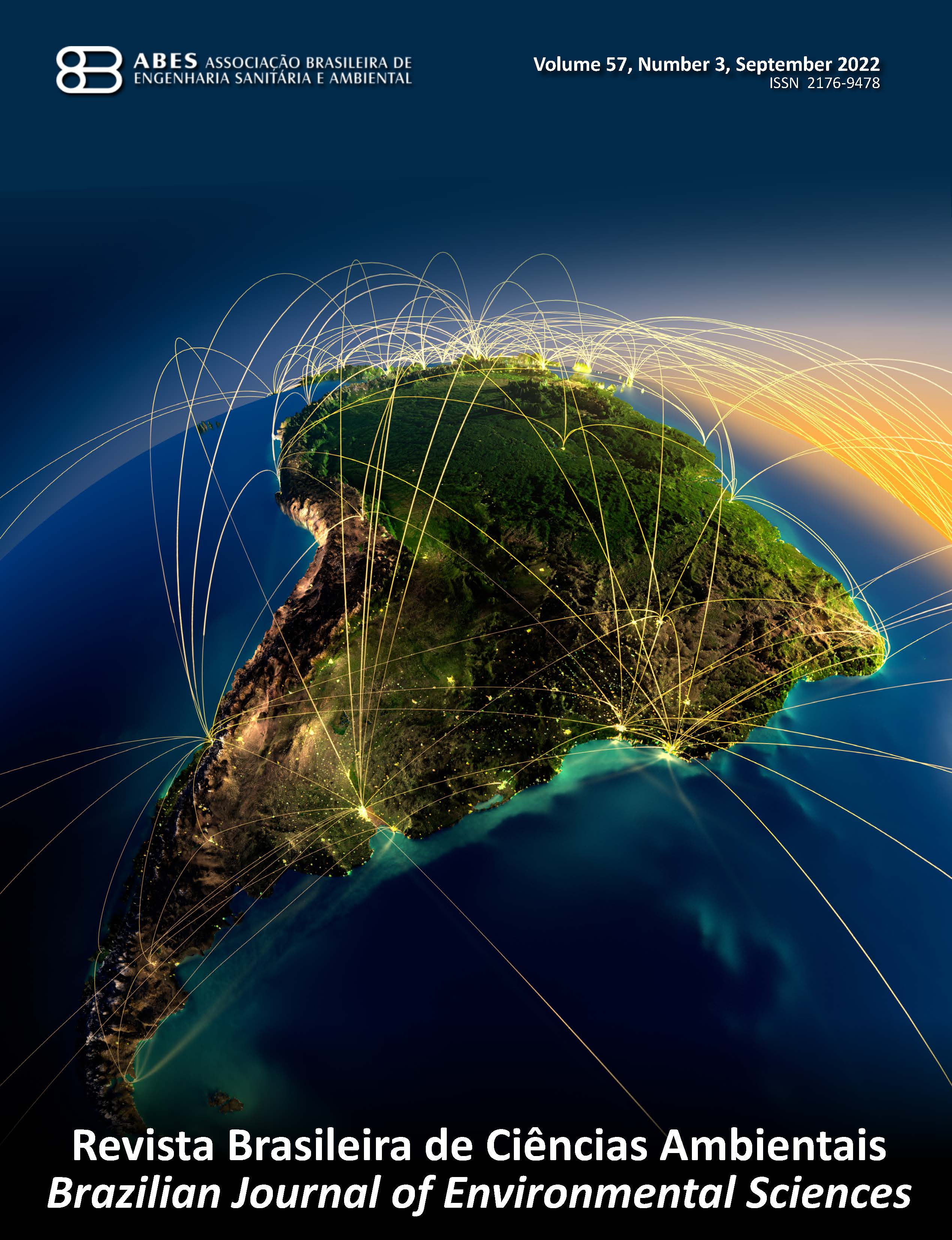Hybrid Models Applied to Create a Classification Index of Fire Risk Levels in Brazil
DOI:
https://doi.org/10.5327/Z2176-94781286Keywords:
fuzzy modeling; forecast model; machine learning; neurofuzzy model; artificial neural networks.Abstract
Fire has always exerted a great attraction on humans. Fires generally provide social and environmental impacts at the places where they occur. Several Brazilian localities, especially in the driest months of the year, are more susceptible to this phenomenon. In this paper, an index able of classifying levels of fire risk in areas geographically located in Brazil. This paper presents an index capable of classifying fire risk levels elaborated from neuro-fuzzy systems. Data from the municipality of Sorocaba were used to test the proposed models. The results obtained by this index are promising, reaching values of mean absolute error below 3% when applied in the prediction of the risk of fire for the maximum period of up to 3 days. The proposed index can be used as a tool to support and assist various research agencies or institutes that need to identify the possibility of burning, corroborating the measures to reduce atmospheric emitters and meeting Goal 15 of Agenda 30 as defined by the UN in 2015, which aims to stimulate conservation actions and the recovery and sustainable use of ecosystems.
Downloads
References
Azad, A.; Manoochehri, M.; Kashi, H.; Farzin, S.; Karami, H.; Nourani, V.; Shiri, J., 2019. Comparative evaluation of intelligent algorithms to improve adaptive neuro-fuzzy inference system performance in precipitation modelling, v. 571, 214-224. https://doi.org/10.1016/j.jhydrol.2019.01.062.
Cuevas, E.; Díaz, P.; Zaldívar, D.; Cisnero, P.M., 2018. Nonlinear system identification based on ANFIS-Hammerstein model using Gravitational search algorithm, v. 48, (1), 182-203. https://doi.org/10.1007/s10489-017-0969-1.
Duarte, M.L.; Silva, T.A., 2019. Avaliação do desempenho de três algoritmos na classificação de uso do solo a partir de geotecnologias gratuitas. Revista de Estudos Ambientais, v. 21, (1), 6-16. https://doi.org/10.7867/1983-1501.2019v21n1p6-16.
Instituto Nacional de Meteorologia (INMET), 2021. Banco de dados meteorológicos. Mapa das Estações (Accessed Apr., 2021) at:. https://mapas.inmet.gov.br/.
Instituto Nacional de Pesquisas Espaciais (INPE), 2019. INPE program fire risk calculation method – version 11. INPE, 2019. (Accessed Apr., 2021) at:. https://queimadas.dgi.inpe.br/~rqueimadas/documentos/RiscoFogo_Sucinto.pdf.
Instituto Brasileiro de Geografia e Estatística (IBGE), 2021. Estimativa Populacional. IBGE (Accessed May 9, 2022) at:. https://ibge.gov.br/cidades-e-estados/sp/sorocaba.html.
Jallal, M.A.; González-Vidal, A.; Skarmeta, A.F.; Chabaa, S.; Zeroual, A., 2020. A hybrid neuro-fuzzy inference system-based algorithm for time series forecasting applied to energy consumption prediction. Applied Energy, v. 268, 114977. https://doi.org/10.1016/j.apenergy.2020.114977.
Lemos, C.F.; Justino, F.B.; Costa, L.C.; Maddock, J.E.L., 2012. Distribuição espacial do índice de Haines para Minas Gerais por análise da média atmosfera. Revista Brasileira de Agropecuária Sustentável, v. 2, (1), 132-143. https://doi.org/10.21206/rbas.v2i1.68.
Ling, H.; Qian, C.; Kang, W.; Liang, C.; Chen, H., 2019. Combination of Support Vector Machine and K-Fold cross validation to predict compressive strength of concrete in marine environment. Construction and Building Materials, v. 206, 355-363. https://doi.org/10.1016/j.conbuildmat.2019.02.071.
Lourenço, R.W.; Silva, D.C.C.; Sales, J.C.A. 2014. Elaboração de uma metodologia de avaliação de fragmentos de remanescentes florestais como ferramenta de gestão e planejamento ambienta. Revista Eletrônica Capital Científico, v. 10, (3), 685-698. https://doi.org/10.5935/ambiencia.2014.03.03.
Malmström, A. 2010. The importance of measuring fire severity – Evidence from microarthropod studies. Forest Ecology and Management, v. 260, (1), 62-70. https://doi.org/10.1016/j.foreco.2010.04.001
Milan, S.G.; Roozbahani, A.; Azar, A.N.; Javadi, S., 2021. Development of adaptive neuro fuzzy inference system – Evolutionary algorithms hybrid models (ANFIS-EA) for prediction of optimal groundwater exploitation. Journal of Hidrology, v. 598, 126285. https://doi.org/10.1016/j.jhydrol.2021.126258.
Mubarak, S.M.J.; Crampton, A.; Carter, J.; Parkinson, S., 2021. Robust data expansion for optimized modelling using adaptive neuro-fuzzy inference systems. Expert Systems with Applications, v. 189, 116138. https://doi.org/10.1016/j.eswa.2021.116138.
Organização das Nações Unidas (ONU), 2015. Transformando Nosso Mundo: A Agenda 2030 para o Desenvolvimento Sustentável. Nova York: ONU (Accessed Apr., 2021) at:. https://nacoesunidas.org/wp-content/uploads/2015/10/agenda2030-pt-br.pdf.
Setzer, A.W.; Sismanoglu, R.A.; Santos, J.G.M., 2019. Método do cálculo do risco de fogo do programa do INPE. Brasil: Ministério da Ciência, Tecnologia, Inovações e Comunicações, v. 11. (Accessed Jun., 2019) at:. http://queimadas.dgi.inpe.br/~rqueimadas/documentos/RiscoFogo_Sucinto.pdf.
Silva, I.D.B.; Pontes, A.C.F., 2011. Development of a Forest Fire Risk Factor using Fuzzy Logic. Biomatemática, v. 21, 113-128.
Soares, R.V.; Batista, A.C., 2007. Incêndios florestais: controle, efeito e usos do fogo. Universidade Federal do Paraná, Curitiba, 250 pp.
Wong, T.T., 2017. Parametric methods for comparing the evaluated by k-fold cross validation on multiple data sets, v. 65, 97-107. https://doi.org/10.1016/j.patcog.2016.12.018.
Published
How to Cite
Issue
Section
License
Copyright (c) 2022 Revista Brasileira de Ciências Ambientais

This work is licensed under a Creative Commons Attribution 4.0 International License.


























